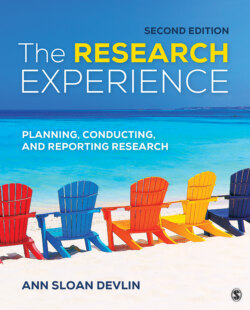Читать книгу The Research Experience - Ann Sloan Devlin - Страница 107
Academic Fraud and Steps Toward Transparency
ОглавлениеFraud is purposeful deception to achieve some kind of gain, financial or otherwise. When people talk about fraud in research, they generally refer to manipulation of some part of the research endeavor. The University of Virginia has a useful website listing forms of academic fraud. These include plagiarism, multiple submission, false citation, false data, and Internet resources (https://honor.virginia.edu/academic-fraud).
Fraud: Deception designed to result in personal gain; may take many forms in the research process.
In this book, a focus is on aspects of the research process where academic dishonesty may occur. You may be familiar with the phrase “ignorance of the law is no excuse,” which essentially means that if you violate standards of conduct, not knowing the “rules” does not excuse the behavior.
Examples of fraud in the academic process have already been discussed, most notably, the fabrication of a dataset by a graduate student (see Chapter 1). Why does such behavior occur? There are many reasons why people take these costly shortcuts, among them being extrinsically rather than intrinsically motivated (Davy et al., 2007). There is some indication that fraud (data fabrication or falsification) is more prevalent in journals with higher impact factors, suggesting that authors purposely seek to advance their standing with these publications (Steen, 2011a). Research by Steen (2011b) also has suggested that research misconduct is increasing and that journals do not always inform their readership of the reasons for the retraction of papers. More than 30% of the retracted papers unearthed in Steen’s analysis were not so identified. Some authors have argued that motivations for power and achievement, labeled neoliberal values of self-enhancement, may explain cheating in higher education (Pulfrey & Butera, 2013).
There are a number of ways in which the integrity of the research process is currently being addressed. One approach is to increase the transparency of research data, by asking submitting authors to make their raw data available in a research data repository that could be available to reviewers, for example, or eventually publically available. A second approach, and its own kind of transparency, is to publicize papers that have been retracted, for which an expression of concern has been posted, or for which a corrigendum (a correction) has been posted. The website Retraction Watch, which is sponsored by the Center for Scientific Integrity, is one such website (https://retractionwatch.com/).
In the work of students in my research methods classes, the incidence of student misconduct has been quite low. When it occurs, it usually involves plagiarism or collaborating on assignments without permission. Fabrication of an entire dataset is at one extreme of academic dishonesty; unintended plagiarism may be at the other. Because plagiarism typically involves the process of writing, the specifics about what it is and how to avoid it are covered in Chapter 13, dealing with writing up and presenting your results.
